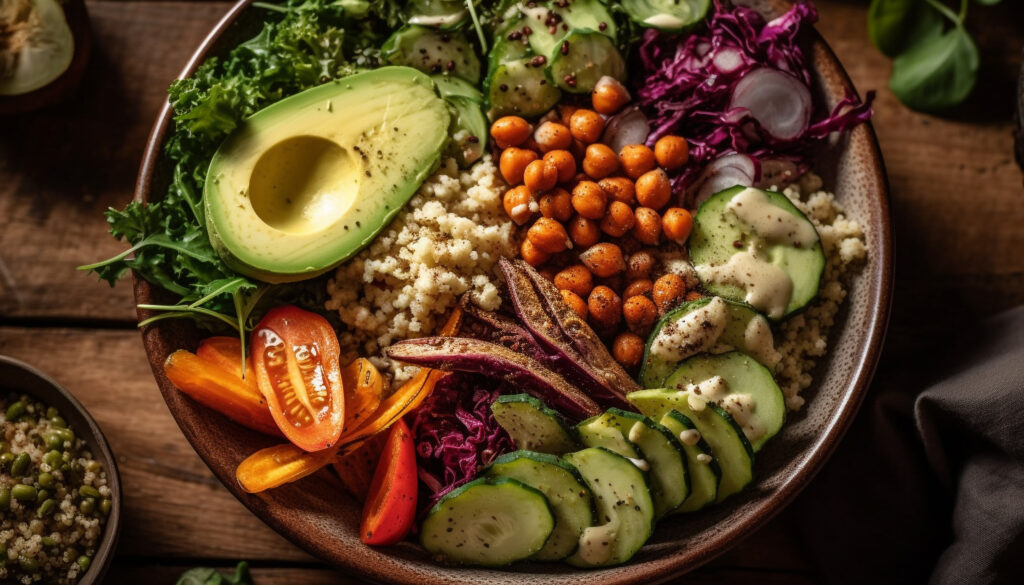Table of Contents
Introduction:
Let’s face it, belly fat. It’s stubborn, unsightly, and can make you feel like you’re constantly wearing a too-tight pool floatie. But fear not, fellow strugglers! I’m here to share the battle cry of frustrated fitness seekers everywhere: belly fat, you’re on notice!
Before we dive into the nitty-gritty, let’s address the elephant in the room (pun intended). Spot reduction, or trying to target fat loss in specific areas, is a myth. So, while you can’t shrink your belly in isolation, you can absolutely reduce overall body fat, which will have a dramatic impact on your midsection.
Now, let’s get down to business. Here are my top tactics, honed from years of personal experimentation and sifting through mountains of research, to wage war on belly fat:
Losing weight can indeed feel like a daunting challenge, especially with the myriad of information and advice available. However, it’s essential to understand that achieving weight loss doesn’t have to be overwhelming. In fact, it can be simplified into a series of manageable steps that, when followed consistently, can lead to significant results.

Embarking on a journey towards weight loss is not just about shedding pounds; it’s about embracing a healthier lifestyle that promotes overall well-being. These six simple steps serve as a roadmap, guiding you towards making sustainable changes that can transform not only your physical appearance but also your mindset and habits.
By committing to these steps, you’re not just embarking on a weight loss journey; you’re embarking on a journey towards a healthier and happier version of yourself. It’s about taking control of your health and making choices that support your long-term goals. So, let’s dive into these steps and discover how you can achieve weight loss in a way that’s simple, manageable, and most importantly, effective.
1. Embrace a Balanced Diet
Eating Protein, Fat, and Vegetables
To kickstart your weight loss journey, it’s essential to adopt a balanced diet that includes protein, fat, vegetables, and complex carbohydrates. According to the Dietary Guidelines for Americans 2020-2025, recommended daily amounts vary by age:
- Protein: Adults should consume 5-7 ounces (oz) daily, while children and adolescents require varying amounts based on age.
- Vegetables: Aim for 2-5 cups daily, adjusting servings for different age groups.
- Healthy Oils: Incorporate 22-44 grams (g) daily for adults, with adjusted quantities for children and adolescents.
- Grains: Include 5-10 oz of grains daily, depending on age.

Protein is particularly crucial for preserving muscle mass during weight loss. Foods rich in protein such as lean ground beef, skinless chicken breast, black beans, and lentils can help reduce cravings and keep you feeling full.
2. Prioritize Physical Activity
Move Your Body Regularly
Combining cardio workouts with weight training is recommended for optimal health. Activities like walking, jogging, running, cycling, or swimming can effectively support your weight loss goals. However, it’s essential to consult with a doctor before starting any new exercise regimen.
Diet is crucial, but exercise is the accelerant in your belly fat-burning journey. Here’s the good news: you don’t have to become a gym rat. Just get your body moving consistently.
- Cardio: Aim for at least 150 minutes of moderate-intensity cardio or 75 minutes of vigorous-intensity cardio per week. Brisk walking, swimming, cycling, and dancing are all excellent options.
- Strength training: Don’t underestimate the power of strength training. Building muscle not only increases your metabolism but also helps you burn more calories at rest. Aim for two to three strength training sessions per week, focusing on major muscle groups.
- HIIT it hard: High-intensity interval training (HIIT) alternates between short bursts of intense exercise and periods of rest. It’s a time-efficient way to burn serious calories and boost your metabolism.
3. Increase Fiber Intake To Know how to lose belly fat
Incorporate Fiber-Rich Foods
Fiber plays a vital role in supporting weight loss by promoting fullness and stabilizing blood sugar levels. Foods such as oats, chickpeas, bananas, brussels sprouts, beets, apples, and quinoa are excellent sources of fiber. Aim to include 2 cups of fruit and 6 oz of grains daily in your diet.

4. Practice Mindful Eating
Eat with Awareness
Engage in mindful eating by staying fully present and attentive during meals. By eating slowly, recognizing hunger cues, and savoring each bite, you can better regulate your food intake and avoid overeating. Minimize distractions during meals to fully enjoy and appreciate your food.
5. Stay Hydrated
Drink Plenty of Water
Drinking water before meals can help reduce food intake, aiding in weight loss. Opt for water or low-calorie beverages over sugary drinks to support overall health. Adequate hydration also enhances fat burning and promotes efficient bodily functions.

6. Prioritize Sleep
Get Sufficient Rest
Adequate sleep is crucial for weight management and overall well-being. Aim for at least 7 hours of high-quality sleep each night to support healthy weight loss. Sleep deprivation can disrupt hunger hormones and increase the risk of obesity.
When you’re sleep-deprived, your body produces more ghrelin, the hunger hormone, and less leptin, the satiety hormone. This can lead to increased cravings and overeating. Aim for 7-8 hours of quality sleep each night.
The fitness industry is booming, and the “healthy belly” niche is no exception. According to a recent market research report: URL how much does the health and wellness industry make a year ON Grand View Research grandviewresearch.com, the global weight loss market is expected to reach a whopping $407.41 billion by 2027. This means there’s a growing demand for qualified professionals who can help people achieve their belly-busting goals.
Here’s where you come in!
If you’re passionate about fitness and helping others, becoming a certified personal trainer or nutritionist could be a fulfilling and lucrative career path. You can help individuals design personalized plans, provide guidance and support, and empower them to reach their health and fitness goals.
Conclusion
Achieving weight loss doesn’t have to be complicated. By following these six simple steps—embracing a balanced diet, prioritizing physical activity, increasing fiber intake, practicing mindful eating, staying hydrated, and getting sufficient sleep—you can make significant progress towards your goals.
FAQs (Frequently Asked Questions)
Is counting calories necessary for weight loss? While not always necessary, tracking calories can be helpful for some individuals to ensure they’re in a calorie deficit for weight loss.
Can I enjoy butter and coconut oil while trying to lose weight? Yes, but in moderation due to their high saturated fat content. Opt for healthier fats like olive oil and avocado more frequently.
What is the recommended daily water intake for weight loss? Aim for a minimum of eight 8-ounce glasses of water per day, though individual requirements may differ depending on factors such as activity level and climate.
Is it okay to skip meals to lose weight faster? No, skipping meals can lead to overeating later in the day and may negatively impact metabolism. It’s essential to eat regular, balanced meals for sustainable weight loss.
How does exercise contribute to weight loss? Exercise is crucial for burning calories, building muscle, and improving overall health. Combine cardio and strength training exercises for the best results.
Do I need to follow a specific diet to lose weight? While there are many diets available, the key to weight loss is creating a calorie deficit. Choose a diet that aligns with your preferences and lifestyle, focusing on whole, nutritious foods.
Can I lose weight without exercising? While exercise can aid in weight loss and overall health, it’s possible to lose weight through diet alone. However, incorporating physical activity can enhance results and improve overall fitness.
Is it normal to experience weight fluctuations during my journey? Yes, weight fluctuations are common and can be influenced by factors like hydration, hormonal changes, and food intake. Prioritize long-term patterns over daily variations.
How long does it typically take to see results from a weight loss effort? The rate of weight loss varies for each individual and depends on factors like starting weight, diet, exercise routine, and metabolism. Patience and consistency are key elements in achieving your goals.
Should I avoid carbohydrates to lose weight? Carbohydrates are an essential source of energy and should not be eliminated entirely from your diet. Instead, focus on consuming complex carbohydrates from whole grains, fruits, and vegetables in moderation.
What should I do if I hit a weight loss plateau? Plateaus are common during weight loss journeys. To overcome them, reassess your diet and exercise routine, consider adjusting your calorie intake, and incorporate new strategies like changing up your workout routine.
Can stress affect my ability to lose weight? Yes, stress can impact weight loss efforts by triggering emotional eating, disrupting sleep patterns, and affecting hormone levels. Practice stress management techniques such as mindfulness, exercise, and relaxation techniques.
Is it safe to take weight loss supplements or pills? While some supplements may claim to aid in weight loss, it’s essential to consult with a healthcare professional before taking any supplements. Focus on making lifestyle changes rather than relying on quick fixes.
Should I eat before or after exercising for weight loss? Eating a balanced meal or snack containing carbohydrates and protein before exercising can provide energy and support muscle recovery. After exercising, refuel with a meal or snack containing protein and carbohydrates to aid in recovery.
How can I maintain my weight loss once I’ve reached my goal? To maintain weight loss, continue practicing healthy habits such as eating a balanced diet, staying physically active, managing stress, and getting adequate sleep. Regular monitoring and adjustments may be necessary to prevent regain.
